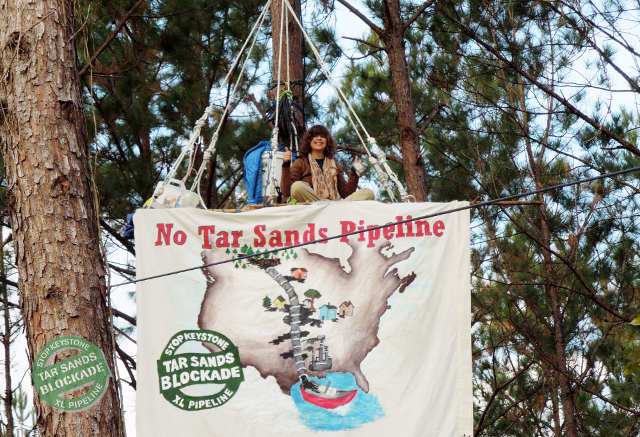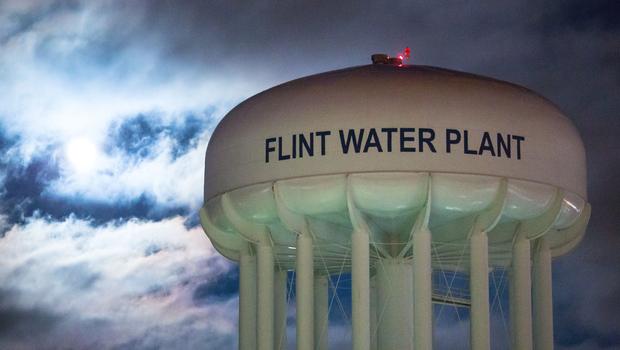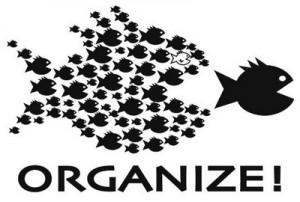Uncategorized
Thanks Governor: An MLK Day Special Posting
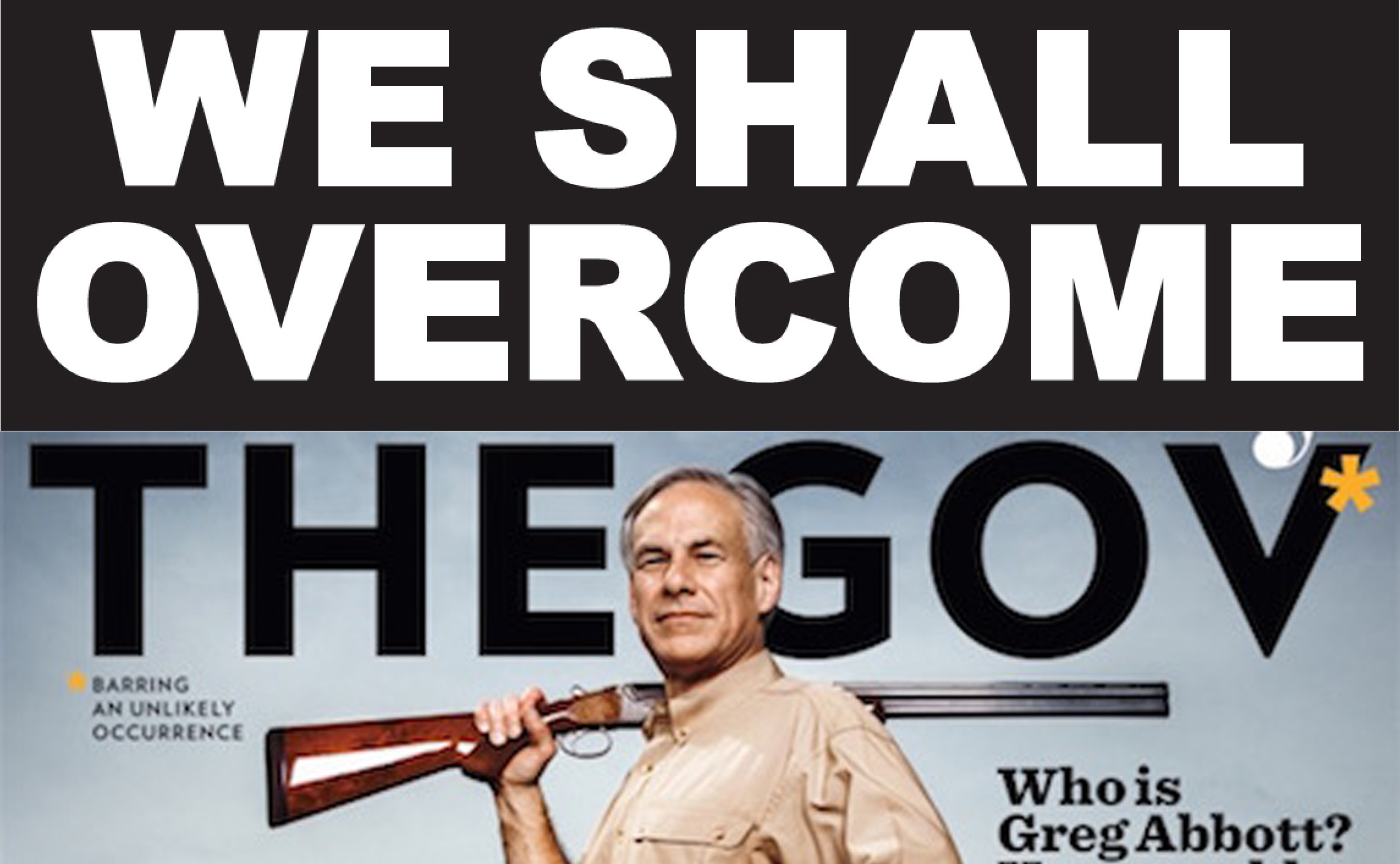
It was a night that might’ve even made atheists Believe.
Answering the impromptu call to action, the weary had come to sit in the pews at the community church. At issue this time was the appearance of their white Governor cynically using elements of the local minority establishment to deflect attention from his racist record. He was coming in three days. Something must be done.
There was the United Front of black clergy in dark suits, the surprisingly feisty local NAACP leadership, the Young Turks, Latino union sympathizers, and white supporters, all making their own personal calculations about bail money and jobs and what lines would be crossed for what reasons when the protest happened.
Only the details of the arrest protocol were yet to be determined in last-minute negotiations with the city and Police Department. Girding themselves, the evening was a gathering of determined souls who seemed to need each other’s company at least as much as they needed legal aid. There was going to be some preaching, some singing, and some praying. Lots of praying.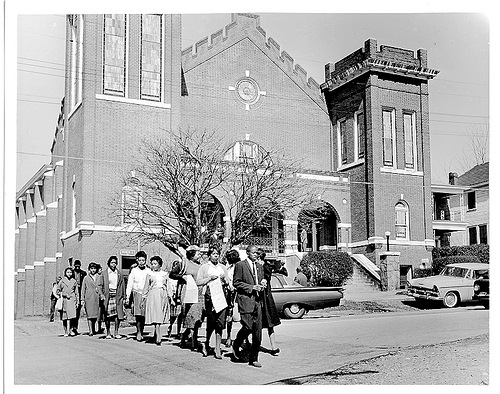
Inside, the gathering was stalwart and righteous. Outside, howling winds were nature’s metaphor for the political storm created by the decision to confront. It had not only angered the usual suspects but split the black community as well. Some black groups and elected officials, as well as a host of murkey-motivated whites (and of course the local daily paper) didn’t see anything wrong at all with the Governor’s visit. This made tonight’s meeting all that more controversial and conspiratorial-like. They were all out on a wind-battered limb.
But just as schedules were being cleared and cash collected, there was a trickle of whispers. Whispers that made people quietly exalt “Hallelujah.” Whispers that lifted the psychic load from faces like sandbags being thrown off a hot air balloon. Whispers full of the Good News.
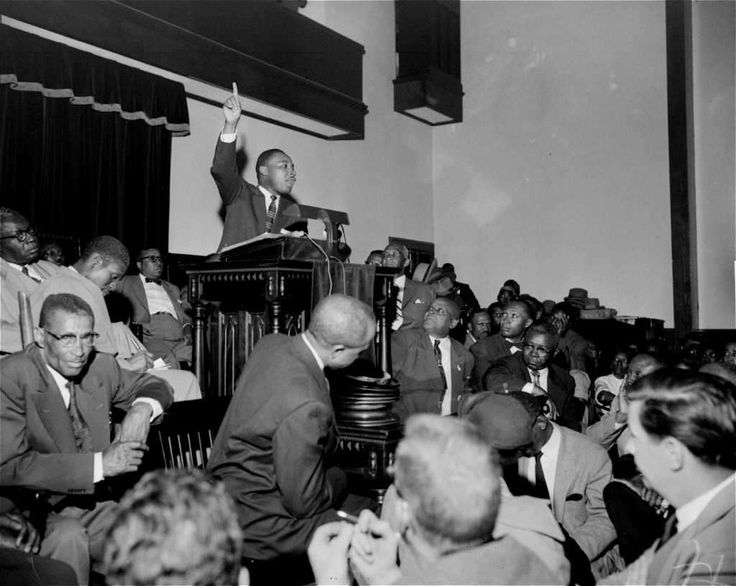
Finally the words were uttered out loud from the pulpit. There would be no protest because there would be nothing to protest. The governor was not coming. Fearing the possible negative publicity of a major civil rights demonstration in their town, local officials had found a blunt if face-saving way to avoid the confrontation. They had canceled the entire event. Applause and louder “Hallelujahs” and “Amens” filled the Sanctuary. The Governor’s office had no comment. Outside the sun came out at dusk.
If you squinted, you could almost see it in grainy black and white.
But it was 2018.
And it wasn’t Montgomery or Jackson. It was Arlington.
For one shining moment last week a part of the local civil rights movement found the intestinal fortitude to save the legacy of the entire civil rights movement. In doing so it illuminated the reason why all of us need a deeper appreciation of that legacy.
When a new MLK Day parade for Arlington was announced with Texas Governor Greg Abbott as its honorary Grand Marshal shortly after New Year’s, the producers unleashed many of the same debates and quarrels stirred-up by almost every protest King was ever in.
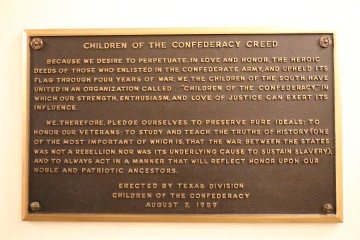
The plaque that STILL hangs on the Texas State capitol wall and that Gov. Abbott STILL refuses to recommend removing
In raising King to secular Sainthood, people forget how controversial he was and still should be. We forget how many times he was called a Communist or a dupe of the Communists by mainstream commentators and government officials. At the very least he was said to be “misguided” and “impatient.” We forget the FBI secretly tried to sabotage his work and family. Many of us don’t know or remember his house being bombed while he and his family slept in it. We forget how many times he went to jail to make a small but important point or spotlight a local campaign. We forget how many black and white clergy warned against him and his brand of radical Christianity.
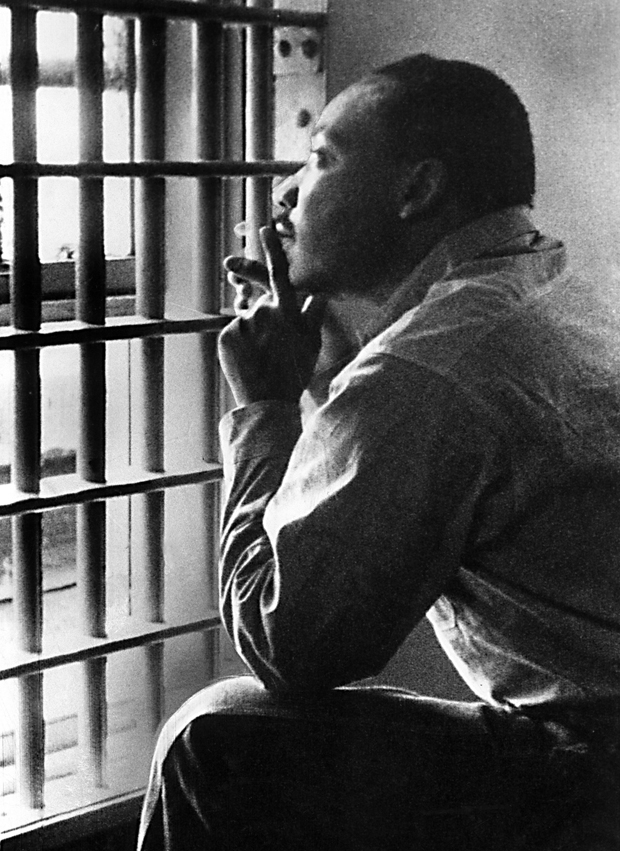
We also forget King was about confrontation as much as reconciliation. The White Establishment would not reconcile themselves to black equality under the law until they were forced to confront the impacts to their communities up close and personal. Non violent direct action was an effective tool to get whites to the table and begin to win concessions and change the system. Reconciliation came only after negotiations as equals took place and progress toward equality was produced. Sometimes that meant integrating interstate transportation. Sometimes it meant hiring more black clerks at downtown department stores. But it always meant some progress was achieved, the system was changed somehow.
Those who didn’t see any problem with Governor Abbott heading up an MLK parade throw away half of King’s approach and go right to an unrequited act of reconciliation without any meaningful or even symbolic concessions from a man who’s made a career out of singling out The Other.
For them, entry to MLK’s legacy is free of charge to the Governor just because of his title. He doesn’t have to earn his way there. He doesn’t have to concede a policy. He doesn’t even have to express remorse or even request a reconciliation. It showed up in his driveway unannounced in a Camry.
That was too cheap a price for those in the church and their supporters. They argued even MLK would have at least made Governor Abbott remove the pro-slavery “Children of the Confederacy Creed” plaque on the state capitol wall before allowing to ride unencumbered in a parade saluting human rights.
One of the most inane comments about the whole affair came from the Governor’s press secretary who regretted that the MLK Day parade her boss, the Governor of Texas up for reelection this year, was riding in was now being “politicized.” Yes, the Morning News tsked tsked in its own circa-1964 way, how unfortunate it was to see an event honoring a leader who was assassinated for his political beliefs devolve into something so unseemly as politics.

Arlington NAACP President Lisa Simmons. Rev. Kennedy Jones is the first from the left.
Rev. Kennedy Jones didn’t agree. He’s the pastor of the Greater Community Missionary Baptist Church in Arlington, Thursday night’s ground zero for the anti-Abbott forces. He was born in Lowndes County, Alabama, known during King’s lifetime as “Bloody Lowndes” for its white residents’ violent resistance to integration. His father marched over the Edmund Pettus Bridge in Selma and he watched from his shoulders when King finally made it to Montgomery. Is it political when you get beaten or killed because you want to vote?
To Rev. Jones, and his father before him, and his father before that, it was. And nothing since those bloody days has convinced him there’s any daylight between politics and civil rights progress. Inviting someone to be Grand Marshal of a King parade who brags about Voter ID laws with the goal of disenfranchising black and brown people was rubbing salt in those wounds. Nobody asked, but if there are 2019 MLK parades looking for Grand Marshals, Rev Jones would be a heck of a good one.
 Taking a stand with him was the Arlington NAACP chapter he belonged to, which is another hero of this showdown. It was their prior relationship with the City, as well as their status as community leaders that made the threat of protest credible and serious. If the oldest civil rights group in town had not stepped up and said “not in our name” the rest of the protesters would have likely floundered. The Fort Worth NAACP had no comment on Abbott’s parade ride. The Dallas NAACP had no comment. And King’s own group, the Southern Christian Leadership Council, was planning on marching in the parade with the Governor, not marching against it.
Taking a stand with him was the Arlington NAACP chapter he belonged to, which is another hero of this showdown. It was their prior relationship with the City, as well as their status as community leaders that made the threat of protest credible and serious. If the oldest civil rights group in town had not stepped up and said “not in our name” the rest of the protesters would have likely floundered. The Fort Worth NAACP had no comment on Abbott’s parade ride. The Dallas NAACP had no comment. And King’s own group, the Southern Christian Leadership Council, was planning on marching in the parade with the Governor, not marching against it.
Let’s face it, in North Texas you’re just not used to seeing the NAACP get out in front of a controversy like this. Doing so took a lot of gumption, personified by Arlington NAACP president Alisa Simmons who used every ounce of her professional PR skills to deliver a dignified but forceful reaction to the parade cancellation. Pressure on the group to fold must have grown to hypertension levels. But it never backed down. It was another little group that did.
There have been recent local “resist” protests that attracted more people and were better organized but maybe not as effective in so short amount of time. Nor quite as vaguely reminiscent of the old liberal alliance that powered so many reforms in the late 1950’s and early 60’s. It’s not an overstatement to observe that last week the DFW civil rights movement had a spontaneous and genuine revival so heartfelt it kept an incumbent Governor from committing an act of civic desecration he desperately wanted to commit in friendly “red” Tarrant County. That’s effective resistance. And its lessons gave us one of the most educational and memorable MLK weeks ever.
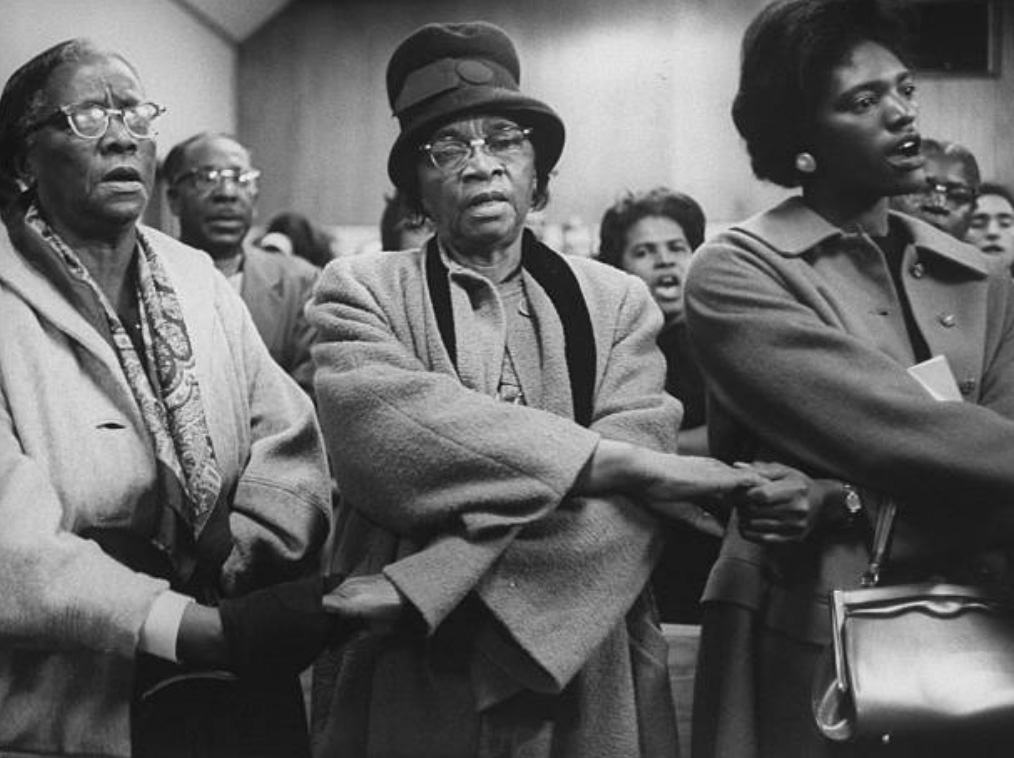 Chances are Abbott will never be asked to ride in another MLK parade and the producers of this one will not be showing up in Arlington with another scheme. But if there was any question as to the response from those assembled in the church, it was answered by the closing Hymm. One picked by Rev. Jones himself.
Chances are Abbott will never be asked to ride in another MLK parade and the producers of this one will not be showing up in Arlington with another scheme. But if there was any question as to the response from those assembled in the church, it was answered by the closing Hymm. One picked by Rev. Jones himself.
Enjoy the marches. By all means attend the demonstrations. But you’ll be hard pressed to beat the spine-tingling, swear-you-can see-it force field generated by a group of successful true believers holding hands in a black church defiantly singing “Go and tell the Governor: we shall not be moved.”
The Texification of the EPA
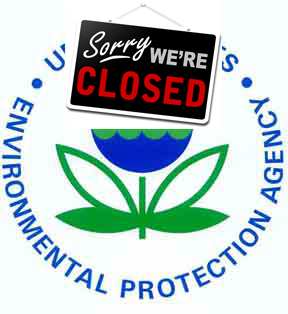
In the last year one thing the Trump Administration has done well is transplant the Texas Commission on Environmental Quality’s (TCEQ’s) approach to its job to the EPA.
Up until the last month or so that mimicking was in spirit only for the most part. But with two high-profile appointments, Trumps’ EPA has imported the very worst aspects of TCEQ’s cynical negligence.
Kathleen Hartnett-White was appointed by then Governor Rick Perry to be a TCEQ Commissioner on behalf of Big Ag in 2001 and served until 2007. She’s a West Texas cattle rancher who served as a National Cattleman’s Association lobbyist and with her stint on the TCEQ expanded her portfolio to include the usual laundry list of industry grievances.
In 2007, she voted to give the TXU an air permit for coal-fired power units at its Oak Grove site in Texas – the last coal plant permitted in the state.
“She has been an apologist for polluters, consistently siding with business interests instead of protecting public health. White worked to set a low bar as she lobbied for lax ozone standards and pushed through an inadequate anti-pollution plan. She also voted to approve TXU’s pollution-intensive Oak Grove coal units, ignoring evidence that emissions from the lignite plant could thwart North Texas’ efforts to meet air quality standards.” Sierra Club? Downwinders? Nope. Try the Dallas Morning News.
Downwinders’ representatives have been in small conference rooms negotiating with White over DFW clean air plans. She was no different in private than she is in public: industry can do no wrong and is never at fault.
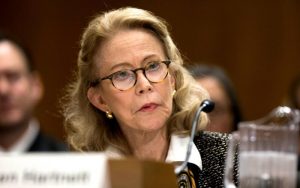 Up until recently she’s been making money as an industry mouthpiece at the Austin-based Texas Public Policy Foundation, funded by a who’s who of energy and utility companies, including Koch Industries Inc., Exxon Mobil Corp., and pieces of the former TXU, such as Luminant and Oncor.
Up until recently she’s been making money as an industry mouthpiece at the Austin-based Texas Public Policy Foundation, funded by a who’s who of energy and utility companies, including Koch Industries Inc., Exxon Mobil Corp., and pieces of the former TXU, such as Luminant and Oncor.
Now she heads up the White House Council on Environmental Quality, a position that coordinates environmental and energy policies across the federal government.
Michael Honeycutt is TCEQ’s Chief Toxicologist. You know him as the guy who says smog isn’t so bad for you. Same thing for Mercury, the risks of which are “overstated” and Arsenic, which is viewed unrealistically toxic by the (old) EPA.
Now he’s Head of the EPA’s Scientific Advisory Board. This is a little akin to putting the head of the Inquisition in charge of Galileo’s 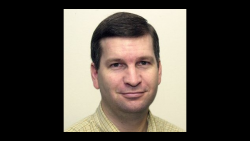 astronomy lab. In announcing his appointment EPA administrator Scott Pruitt praised Honeycutt as a “wonderful scientist.”
astronomy lab. In announcing his appointment EPA administrator Scott Pruitt praised Honeycutt as a “wonderful scientist.”
It’s the culmination of a long lobbying campaign to get Honeycutt imbedded somewhere in the federal regulatory apparatus. In 2016, he sent more than 100 emails to industry representatives, state air pollution regulators, university professors and scientists asking them to support his nomination to the Clean Air Scientific Advisory Committee. At the time, he wrote that it would be a “minor miracle” if he were selected. It took a major one with the election of Donald Trump.
These selections make it clear that the EPA is closed for business as long as the current crew is in charge. It won’t have the money to do its job, it won’t have the employees, and it won’t have the motivation. Indeed, the object is to dismantle the Agency.
After years of Republican statehouse control, this lazaire-faire approach to pollution is easily recognizable to us here in Texas. What’s new is its wholesale arrival in DC. Neither Bush Senior or W put these kind of science deniers in charge.
These appointments make it crystal clear that states or cities that want to protect air quality are on their own.
Burning Plastic Campaign Gets “Stuff”ed
https://www.facebook.com/GAIAzerowaste/videos/10155080333930773/
Our efforts to stop plastic garbage burning in cement plants got a boost last week when the San-Francisco based Global Alliance for Incineration Alternatives (GAIA) kicked-off a national campaign with a video from the The “Story of Stuff” folks accompanying a pledge of opposition to the practice you and your group can sign online.
In July, we reported on a plan by DOW Chemical and Keep America Beautiful to encourage you to bag up those “hard-to-recycle” plastics and send them to a cement kiln to be burned without the expense of all those environmental controls you’d have to deal with at a legitimate waste disposal site. The two were offering US communities at least $50,000 in subsidies to go along with the idea.
This is already happening in Omaha, where 8,500 homes have filled 13,000 “Hefty Energy Bags” since the program’s launch a year ago. That’s resulted in more than 13,000 pounds of plastics being burned in a near-by cement kiln.
Since DFW is home to the largest concentration of cement plant manufacturing capacity in the country, and since those cement plants already burn industrial wastes in an attempt to cut their high fuel costs, the expectation is that this practice will sooner or later be proposed for North Texas cities. And indeed, when DOW and Keep America Beautiful held a press conference advocating plastics burning across the country this summer, there was a big red star right over DFW as part of the project’s projected growth.
The Story of Stuff video from GAIA actually takes the video DOW used to introduce its “energy bags” earlier this year and tweaks it to tell the story of “dirty energy bags.”
GAIA’s plastics pledge looks like this and any individual or group can sign on:
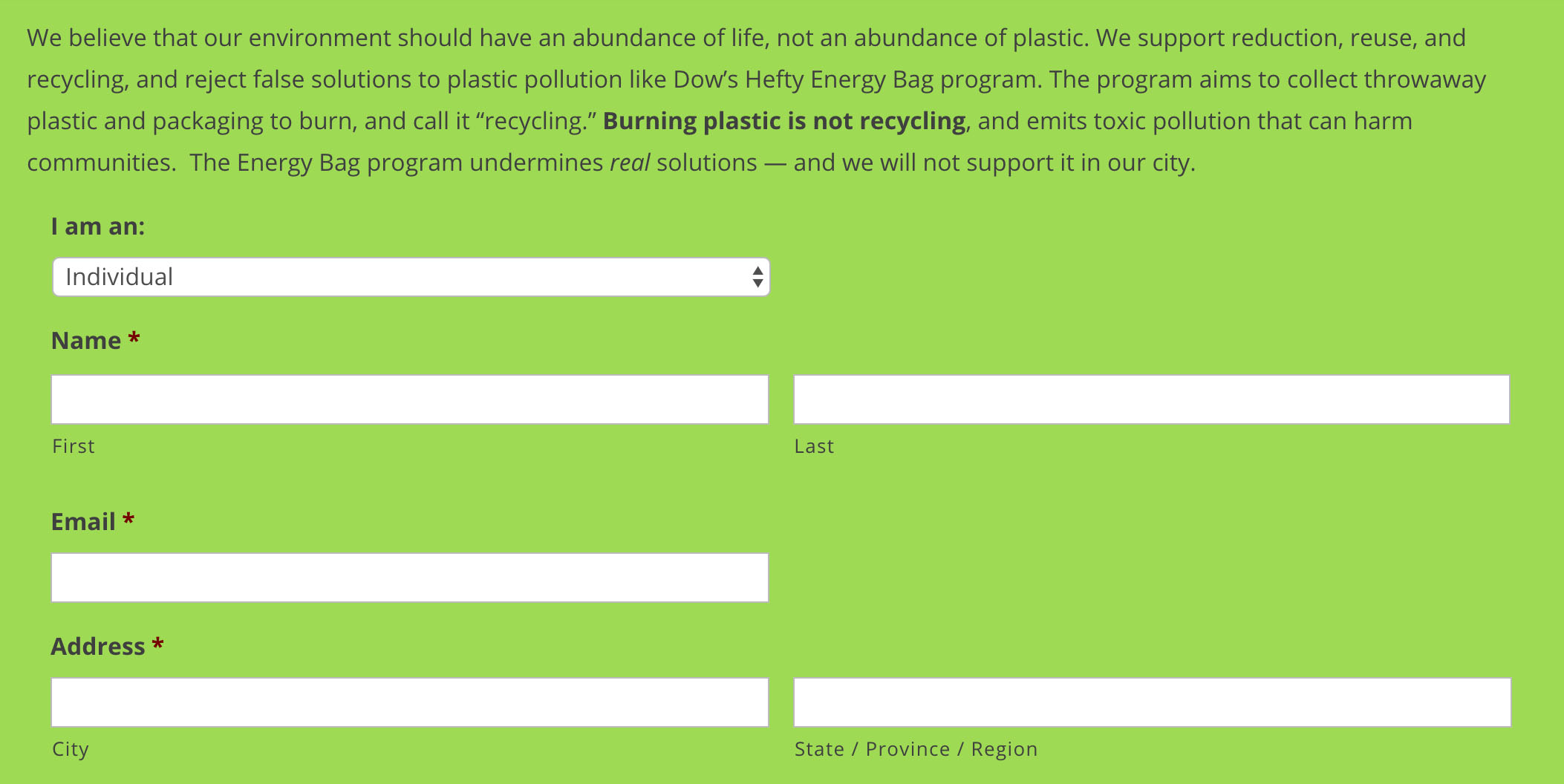
The GAIA website makes the case that single-use plastics already crowd our landfills and pollute our waterways, but burning them offers a greenwashing “relief valve” to allow continued, or even increased production of this kind of plastic.
Burning plastics can release Mercury, Dioxins and metals into the atmosphere – and your lungs. Cement plants are not equipped with the same pollution controls as a single-purpose garbage incinerator, and so they emit many times more of this kind of pollution than even a single-purpose garbage incinerator.
Plastic is made from fossil fuels, and in order to make sure we have a liveable planet for generations to come, we need to transition to a circular economy where our products can be easily reused or recycled, not produced from scratch using greenhouse gases.
Send a message that you will not support the Hefty Energy Bag in your city, and let’s expose the truth behind the bag!
Please Go online and sign the pledge.
It will take you all of 30 seconds, but it will send a message to stop this very bad idea before it gets too far.
And if you haven’t already, you can still send an email to the chair of Keep America Beautiful with our click ‘n send featured citizen action. Helen Lowman’s from Texas and maybe you can convince her this isn’t a very neighborly thing to do.
Brown, Big: 1971-2018
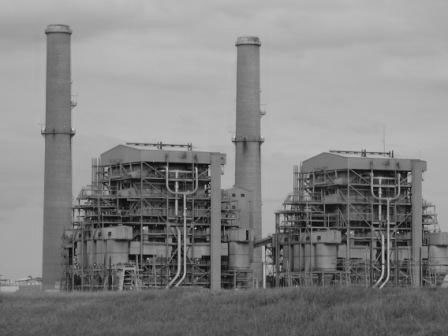 After years of declining fiscal health, the Big Brown lignite coal plant finally succumbed last Friday. An announcement was made by its most recent caretaker, Vistra Energy last Friday morning. The cause of death was obsolescence. It was 47.
After years of declining fiscal health, the Big Brown lignite coal plant finally succumbed last Friday. An announcement was made by its most recent caretaker, Vistra Energy last Friday morning. The cause of death was obsolescence. It was 47.
Controversial from its birth, the 1. 2 Gigawatt Big Brown lived up to its name and was Texas Utilities’ flagship power plant for decades. It began by burning 100% Lignite Coal, the mud-like fossil fuel native to East and Central Texas. By the end however, it was importing thousands of tons of “cleaner” Wyoming Powder Basin Coal in long freight trains to comply with interstate pollution rules.
Along with other coal-fired power plants in East Texas, Big Brown was citied for causing acid rain to by SMU Chemist George Crawford as early as the 1980’s. It was then discovered to be a major contributor t0 Dallas-Fort Worth smog, a fact reinforced by a 2008 study from another SMU professor and former EPA Regional Administrator Dr. Al Armendriz, and more recently by Dallas Medical Society’s Dr. Robert Haley in his 2015 report on ozone levels and public health in DFW. Public Citizen/Texas and the Sierra Club had been particularly hostile to the plant’s continued operation.
As coal lost favor as an energy source, Big Brown’s estimated lifespan had been the subject of countless rumors over the last decade. Towards the end the plant consistently refused modern technology which might have prolonged its life, such as Sulfur Dioxide scrubbers and Selective Catalytic Reduction for smog pollution.
The timing of the plant’s demise was seen as a major embarrassment to officials in the Trump Administration, who’ve promised to promote coal. On the same day as Vistra’s notice about Big Brown’s demise, Trump appointed known fossil fuel promoter Kathleen Hartnett White to lead the White House Council on Environmental Quality.
It was the third Texas coal plant to expire in less than a week. Big Brown was preceded in passing by the Monticello lignite plant, which announced its departure on October 6th. Vistra said its smaller Sandlow power plant near Bastrop was to be closed in 2018 as well.
In 2016, these three coal plants emitted a total of 166 million pounds of sulfur dioxide, 24 million pounds of nitrogen oxide, and 21 million tons of carbon dioxide pollution. Their absence during the 2018 “ozone season” could be the first time DFW stands a chance of complying with the Clean Air Act in 27 years.
Survivors, for now, include the coal-fired Martin Lake and Oak Grove power plants, as well as NRG’s Limestone power plant, southeast of DFW.
Birth, Sleep, Germs, & Race: New Science Reveals How Much We’re Affected by Bad Air
“Maternal exposure to ambient air pollution and fetal growth”
Universities of Edinburgh and Aberdeen, August 2017
Scientists studied maternal exposure to ambient concentrations of PM10, PM2.5 and nitrogen dioxide (NO2) for in utero fetal growth, size at birth and effect modification by smoking status.
“Dirty air can lead to women giving birth to smaller babies ,according to new research which also warns that exposure to air pollution during pregnancy rivals the damage done by smoking. Lead scientist Dr Tom Clemens explained that his team’s findings showed that “a foetus with a non-smoking mother exposed to high pollution levels is only slightly better off than one with a smoking mother exposed to low levels of pollution”. Clemens urged the World Health Organization (WHO) and the European Union to review their separate definitions of what emission levels are considered acceptable.“
“Air Pollution and the Microbiome” 
University of Milan, September 2017
This is the first study to look at how air pollution levels relate to types of respiratory microbe in healthy people.
“Exposure to air pollution correlated with differences in the species of bacteria living in our respiratory tracts. Higher levels of particulates in the air from three days before sampling correlated with a lower diversity of bacteria in the nasal swabs. The concentration of Actinobacteria, the dominant group in a healthy microbiome, was lower in volunteers exposed to higher levels of pollution. The part that these bacteria play in the body is not yet clear, but they are known to produce compounds with antimicrobial and anti-inflammatory properties. Another group of bacteria that can cause harmful respiratory infections, Moraxella, was typically found in greater concentrations in people exposed to higher pollution levels.” This is interesting because other studies have linked both air pollution AND gut bacteria to Autism.
 “Relation of Air Pollution to Sleep”
“Relation of Air Pollution to Sleep”
University of Washington, September 2017
A study linking air pollution to sleep efficiency, which is determined by comparing the amount of time participants spend sleeping at night to the time they spend awake.
“After collecting air pollution data in six U.S. cities over the course of five years, researchers analyzed the sleeping patterns of 1,863 participants—all of whom lived near those cities—over a span of seven days and found higher levels of nitrogen dioxide and particulates called PM 2.5 were linked to lower sleep efficiency. Further examination found that the highest levels of nitrogen dioxide increased the participants’ chances of suffering from low sleep efficiency by nearly 60 percent. The highest levels of PM 2.5s increased the odds of poor sleep by nearly 50 percent. Researchers also found the more participants were exposed to air pollution, the more hours in a day they spent awake.”

“Changes in Transportation-Related air Pollution Exposures by Race-Ethnicity and Socioeconomic Status”
University of Washington, September, 2017
People of color are still far more likely to suffer from harmful air pollution than white people across the US and this disparity has barely improved in recent years, despite overall improvements in air quality.
How Fort Worth Neighborhoods Helped Birth a High-Tech Regional Air Monitoring Network
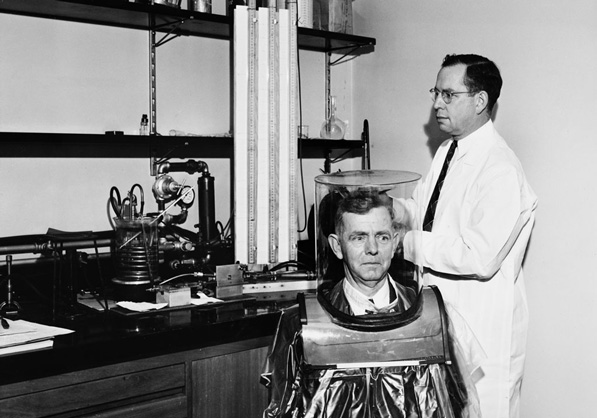
“An Evening of Science and Socializing”
Monday, June 22nd
7- 9 pm
The Ginger Man
3715 Camp Bowie
Featured Guest: Dr. David Sterling, Professor of Biostatistics and Epidemiology,
University of North Texas Health Science Center
Co-Sponsored by the Fort Worth League of Neighborhoods
They approached the leadership of the Fort Worth League of Neighborhoods, an umbrella organization of 350 neighborhood associations, about establishing a series of focus groups on the issue. The League agreed.
Those focus groups have provided us with the most thorough knowledge about community attitudes toward air quality in DFW that we’ve ever had, and directly influenced the bottom-up design of a new high-tech sensor network for air quality.
Leading those focus groups were UNTHSC Professor Dr. David Sterling and Doctoral candidate Leslie Allsop. Dr. Sterling is our featured guest tonight in Fort Worth at The Ginger Man for our second “Evening of Science and Socializing.” Ms. Allsop will be at our third and last event in Denton with Dr. David Lary on Wednesday night.
Residents in Sterling and Alsopp’s neighborhood focus groups voiced a high level of concern regarding air pollution and what they saw as the sources of it, including vehicles, fracking, and cement plants.
Participants also expressed a severe distrust of current information. They didn’t see the information available through government and media sources as being relevant to their neighborhood, or adequate to address their questions about specific emission sources.

Specifically:
• Participant’s perceptions of air quality was overwhelmingly negative, and available information was seen as being biased or unreliable.
• Within the socio-ecologic model, the primary impacts of air quality were perceived as greatest at the individual/neighborhood level.
• The ability to influence air quality at the individual/neighborhood level were perceived as negligible.
• Influencers were seen as residing at the policy and community level, but limited benefit at individual/neighborhood levels were perceived to occur.
Recognize any of these reactions? Concerned, but feeling powerless to affect the status quo.
How do you overcome this attitude? You build your own air quality monitoring network. One that’s independent of the government. One that citizens help design. One that allows you to feed information into it, as well as get much better information from it.
That’s the alternative system the DFW Air Research Consortium, including the UNTHSC researchers, is constructing from scratch.
Besides the disbursement of small e-sensors over the entire region that combine to give you a “weather map” of air pollution in real-time, one of the most distinct features of the Consortium’s new system is a digital dashboard that can collect the information a resident inputs into it.
Say you’re having a bad air day. Your eyes are watering. You have breathing problems. You check those boxes on the dashboard. The next time those conditions are forming, the dashboard will warn you. That’s the micro level.
But it will also take note of everyone else’s symptoms that were entered as well. If lots of people were also having a bad air day, it will tell you. And if people are experiencing health effects at certain levels, you’ll be able to see that in a very direct correlation. In this way citizens themselves are their own epidemiologists, with the possibility of establishing symptoms at levels of exposure to pollutants not yet linked in the literature. That’s the meta level.
All of this interactivity between user and app is traceable back to the UNTHSC’s focus groups starting four year ago. Fort Worth residents are responsible for helping to design the software to be paired with the Consortium’s sensor hardware.
Tonight in Fort Worth, UNTHSC’s Dr. Sterling gives an update about where his research has taken him and Ms. Allsop, including being in the running for a $3 million National Science Foundation grant with the rest of the Air Research Consortium. The competition includes the Argonne National Laboratory.
Libby Willis, President of the League of Neighborhoods when the research started will be there as well representing the residents who are responsible for so much of the direction of the current Project.
Besides the larger NSF grant awaiting a decision, two active citizen sensor projects already going on will also be discussed: Downwinders’ own Wise County Ozone Project and a grant that will allow the pairing of 10 sensors with ten DFW schools.
You don’t have to wait until 2018 to resist the anti-environmental agenda so in vogue in Austin and Washington. You can help build an alternative now.
It’s a Bad Air Day. Fight back with a donation to the only citizen’s group that’s fighting DFW smog year round
 The Texas Commission on Environmental Health has issued an ozone alert for today, Saturday May 13th. It issued one for last Saturday as well. It has issued one for tomorrow too.
The Texas Commission on Environmental Health has issued an ozone alert for today, Saturday May 13th. It issued one for last Saturday as well. It has issued one for tomorrow too.
We’re not going to tell you to ride a bike or share a ride. That’s great stuff to do, but we need deep, long-term, systematic change to breathe safe and legal air.
One new control device on a local cement kiln, coal plant or compressor can reduce the equivalent pollution of thousands and thousands of vehicles the moment it’s turned on. But the political process to implement those controls remains hostage to industry and forces hostile to any air quality regulations, no matter how beneficial to public health.
In 2017, Downwinders at Risk is still the only group devoted to seeking that deep, long-term, systematic change in DFW air quality…24/7 365 days a year. After 23 years, we’re still here, still 100% local, and still committed to our mission, funding the only full-time staff working to get safe and legal air for you.
You can’t vote against anyone today. You can’t go to a hearing and testify. But if you’re mad about or just tired of having to still worry about the air you’re breathing, you can give a little bit of money to the local clean air group every time there’s a bad air day. Like today….
Downwinders Spotlighted as part of Goldman Prize Celebration
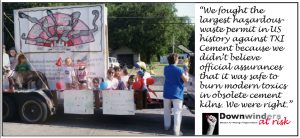 Economics and Physics has the Nobel. Journalism has the Pulitzer. Environmentalists have the Goldman.
Economics and Physics has the Nobel. Journalism has the Pulitzer. Environmentalists have the Goldman.
The Goldman Prize is the world’s largest award honoring grassroots environmental activists. It’s awarded to six activists every year – one on each continent. Winners are selected by an international jury who receive confidential nominations submitted by a worldwide network of environmental organizations and individuals. Since the it was established in 1989, a total of $15.9 million has been awarded to 157 honorees from more than 79 countries.
Last month the 2017 Goldman Prize winners were announced and two of the recipients echo local fights of our own, briefly turning the spotlight on Downwinders’ beginnings as a group fighting the burning of hazardous waste in the local Midlothian cement kilns.
Uroš Macerl, an organic farmer from Slovenia, successfully stopped a 130-year old LaFarge cement kiln from co-incinerating pet coke with hazardous industrial waste by rallying legal support from fellow Eko Krog activists and leveraging his status as the only citizen allowed to challenge the plant’s permits.
As part of the celebration of his winning, global anti-incineration group GAIA is hosting a page featuring other cement kiln warriors and of course no such page would be complete without a mention of Downwinders. Answering the question posed by GAIA of “Why We fought?” the memorial features the Downwidners float in the 1995 Duncanville Fourth of July Parade with the statement the “We fought the largest hazardous waste permit in US history against TXI cement because we didn’t believe official assurances that it was safe to burn modern toxics in obsolete cement kilns. We were right.”
The North American Goldman winner was Mark Lopez who was recognized for his role in closing down, and then getting a clean-up of the Exide lead smelter on Los Angeles’ East Side. That would be the same Exide corporation that operated an outlaw lead smelter in Frisco until Downwinders and its affiliate Frisco Unleaded teamed up to close it down in only nine months back in 2012.
Downwinders salutes all the Goldman Prize winners but wonders if anyone on either coast will take note of what this “little group that could” has done here in the belly of the beast over the last two decades? If you agree we’re at least worth the consideration, won’t you please throw some money into the hat. We’ve still got Giants to slay.
Downwinders Participates in First Earth Day Texas Oil and Gas Symposium
Downwinders at Risk is proud to be taking part in the first annual Responsible Shale Energy Extraction (RSEE) Symposium & Exposition, happening over two days at this year’s at Fair Park in Dallas, Friday April 21st and Saturday, April 22nd.
Climate Change superstar Dr. Katherine Hayhoe, Fracking health-effects lecturer (and Downwinder friend) Dr. Anne Epstein, and the Texas Railroad Commission’s own Ryan Sitton will also be participating, along with lots of others.
UTA’s Collaborative Laboratories for Environmental Analysis and Remediation, or (CLEAR) is the event’s primary sponsor and organizer, with an assist from the Cynthia and George Mitchell Foundation in Houston. Some of you may know the late George Mitchell as the inventor of fracking, but even he had serious second thoughts about the way the technology was being used.
The Symposium is an attempt to round-up scientists, industry advocates, environmental groups, and technology developers to talk both about fracking’s very real problems, and possible solutions, in an open forum.
 Since 2012 CLEAR has been out and about collecting samples throughout the Barnett Shale and other plays, identifying surface water and groundwater contamination issues that may or may not be directly linked to fracking itself. This is the first time in its history the group has taken on the task of sponsoring a two-day conference. Almost every aspect of unconventional shale mining, or hydraulic fracturing, will try to be addressed.
Since 2012 CLEAR has been out and about collecting samples throughout the Barnett Shale and other plays, identifying surface water and groundwater contamination issues that may or may not be directly linked to fracking itself. This is the first time in its history the group has taken on the task of sponsoring a two-day conference. Almost every aspect of unconventional shale mining, or hydraulic fracturing, will try to be addressed.
Everything is being run out of “The Westminster Abby of Texas,” Fair Park’s own Hall of State. A complete schedule is available here.
Downwinders’ Director Jim Schermbeck appears as part of a roundtable discussion on fracking in general, comparing the perspectives of landowners, gas operators, public health and environmental advocates and scientists. It includes water entrepreneurRichard Seline (AccelerateH20), TRRC Commissioner Ryan Sitton,Laura Buchanan, Executive Director of the Texas Land & Mineral Owners Association , and UTA’s own Kevin Schug.
Maybe you’ll want to come by The Hall of State Friday and mention to Commissioner Sitton how much you dislike the fact that BlueStone wants to put a new injection well on the shores of Lake Arlington. Or show-up on Saturday to see Dr. Hayhoe wow ’em again. But anytime you decide to visit Earth Day Texas, please make sure you come by and say hello to us at the Downwinders table over in the Centennial Building.
How Will You Spend Your First Week of Trump? The Root and Branch Revue Offers Lessons in Resistance
We've got the first three scheduled events for the 2017 version of our Root and Branch Revue nailed down for next month and they all offer a chance for you to contribute to the resistance of the anti-environmental, anti-democratic aganda of the Trump Administration, right out of the box:
Tuesday, January 24th
7-9 pm
Angelika Theater @Mockingbird
Film Screening and Panel Discussion
"When is Civil Disobedience Effective?"
FREE
Film Screening : "Above All Else" is a firsthand account of the dramatic 2012 East Texas Keystone XL Pipeline Blockade. What began as a stand by one landowner became a frontline action for the nationwide climate change movement. Many DFW residents participated in this action and some of them will be there at the Angelika on Tuesday.
Panel discussion afterward includes:
Mavis Belisle, veteran peace activist
Peter Johnson, veteran civil rights activist
Corey Toriani, East Texas Keystone Blockader
Moderated by Jim Schermbeck, Downwinders at Risk
Co-Sponsored by the Dallas Peace Center
Thursday, Janaury 26th
7-9 pm
Mountain View College Performance Hall
"Flint Comes to Dallas –
Or Is It Already Here?
An Evening with the Women Who Broke the Flint Scandal Wide Open
– and Their DFW peers
FREE
Featured Guests from Flint:
Melissa Mays – founder, "Water You Fighting for?" citizens group in Flint. Melissa is respsonsible for inviting scientists from Virginia Tech to do independent water testing in hundreds of households in Flint. Those test results are what finally made the government take notice of the largescale lead poisoning taking place in Flint.
Nayyiriah Shariff – an organizer for the Flint Democracy Defense League and an advisor to Black Lives Matter.
DFW residents who've fought their own local lead contamination fights:
Luis Sepulveda – founder, West Dallas Environmental Coaliton for Environmetnal Justice, former Justice of the Peace
Colette McCadden, co-founder, Frisco Unleaded
Moderator: Randy Lee Loftis: Texas Climate News, former Environmental Reporter for the Dallas Morning News. Mr. Lofits has written about the lead contmaination problem in West Dallas and Frisco for the Morning News, and more recently covered Flint for National Geopgraphic.
Saturday, January 28th
9:30 am to 5:30 pm
1-Day University of Change
Bluebonnet Ballroom
inside UTA's University Center
at the Arlignton Campus
A full day of skills and info workshops
with lunch included, for only $35!
Worshops Include:
Health Survey Dos and Don'ts
High Tech Tools for Citizens
Do-it-Yourself Water Testing
Basic Door-to Door Outreach
Petition Rights
Making Violations Stick
Fighting Permits in Texas
________________________________________________________________
Special lunchtime panel discussion among local elected officials:
"How Do Local Governments Protect Their Quality of Life Goals
in the Trump Era?"
Participants include Dallas County Commissioner Teresa Daniel and Dallas City Council Member Sandy Greyson with more to come.
Limited Seating. Register now for the 1-Day University of Change Here.





